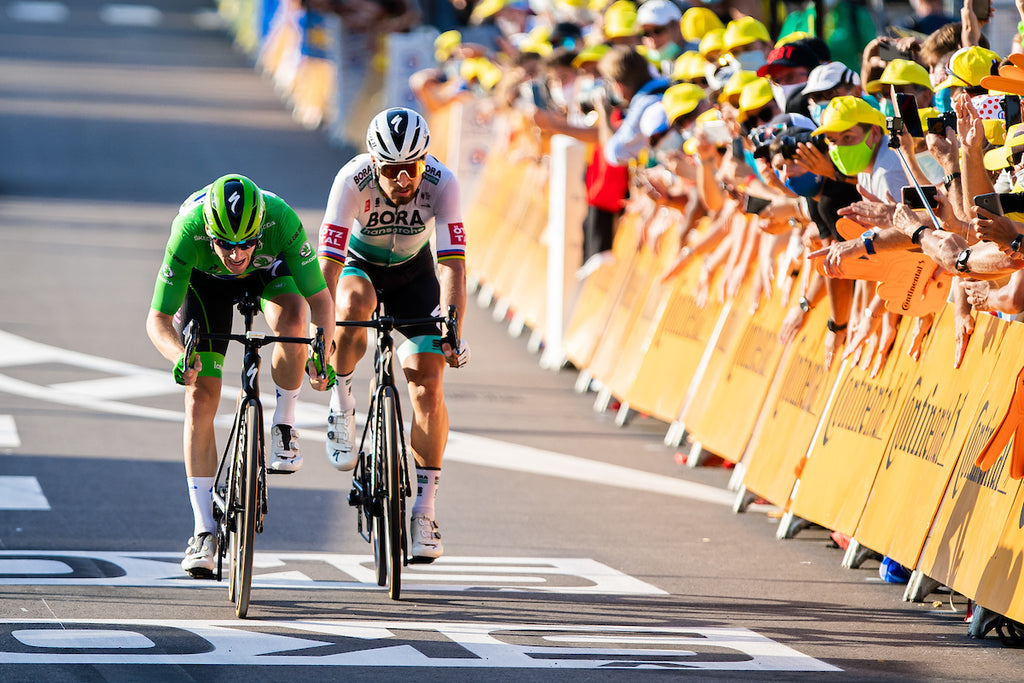It ain't over til it's over - Tour de France 2020, Stage 19
For all the (somewhat spoiled and bratty) grumbling about the dreariness of day five, there has not been a single stage of this year’s race that was not worth watching, and worth watching in its entirety.
Two years ago we should have been so lucky to have had a day like that one. We awarded the Stage 13 Top Banana for that edition to an empty field, for goodness sake.
And in this Tour de France, the final “proper” road stage was no exception. Much as some might have welcomed a sleepy stroll from Bourg-en-Bresse to Champagnole, a warm-up or cool down ahead of the more meaningful time trial the following day, we were never going to get that.
Partly that was a product of the parcours: a thing of genius, a real racer's profile. On paper not flat enough to guarantee a traditional Breakaway>Snooze>Catch>Bunch sprint, but not sufficiently hilly to rule out the possibility of something similar. A bike race is not a complicated entity but a chaotic one. While it would not be true to say that any outcome was possible, many were.

Contributing to the other side of that equation was the state of the race. The points competition being still very much alive meant it would all come down to tactics. Each of the teams involved will have known what they would like to do, in an ideal scenario; and they will have known just as well how unlikely it would be for the stage’s storyline to play out in the perfect way for them. If it had been a simple case of Quick Step v Bora v CCC then it might have been just about manageable for each one, but there were 19 (maybe fewer than that) other teams eyeing up opportunities as well. Each squad could only control so much.
How many plans A, B and C did the different directors discuss on their buses yesterday morning? Did the way it unfolded come close to any of their expectations? Did they ever imagine it might? The answer to both those two questions is: We doubt it.
The team which would emerge least bruised from the fight was always going to be the one best able to improvise, adapt and respond on the road.
And for those of us watching the road, what was fascinating was not, in the end, what actually happened but what was not happening and at any point could. A cloud of tension hung over the peloton for hours. We knew the stage would explode at some point, we just didn’t know when. We had no idea what form that explosion would take and how many further detonations would follow. That was why we couldn’t look away.

In sending talented French TT champion Rémi Cavagna up the road early on Deceuninck Quick Step, the team defending the green jersey, had evidently decided that attack was the best way to do just that. It was a smart move, disincentivizing Bora from forcing things early and meant Cavagna was on his own until not long after the intermediate sprint, placed much further into the stage than has been typical in this Tour. Like we said, the course designers knew what they were doing.
And that was, roughly, where it all started. Sagan, Bennett and Trentin all went for the remaining points and pushed on. That move was briefly brought back before another went which all three followed. Among a strong group of riders, along a lumpy, bumpy road, wheels watched wheels before Søren Kragh Andersen took flight. Two stages for him and a fine three weeks for his team.
The maillot vert contenders came in, appropriately, as one. We are now all but sure to have a new points champion on Sunday. Though brilliant for Sam Bennett, and less so for Sagan, the journey has mattered more than the destination. Because not for a minute has it been boring.










































